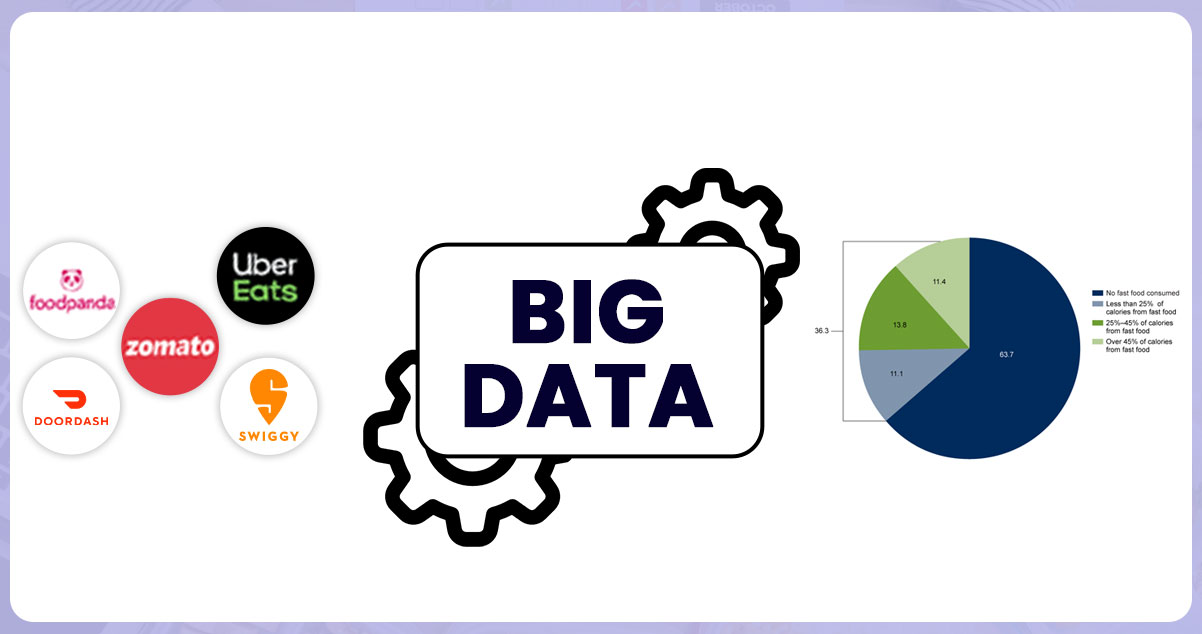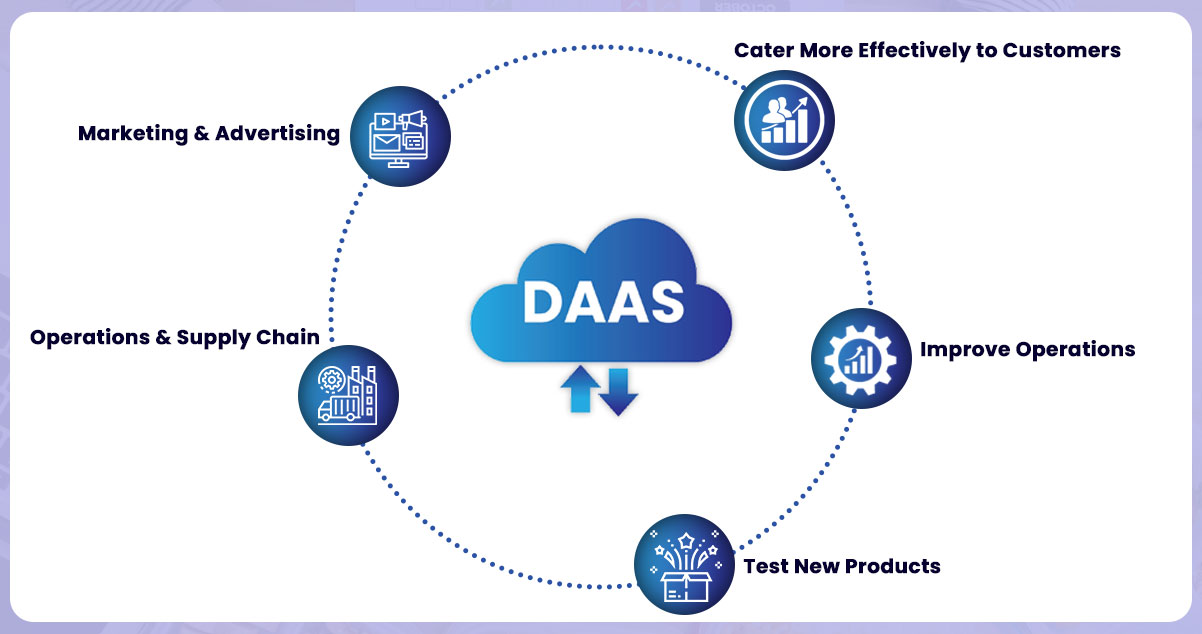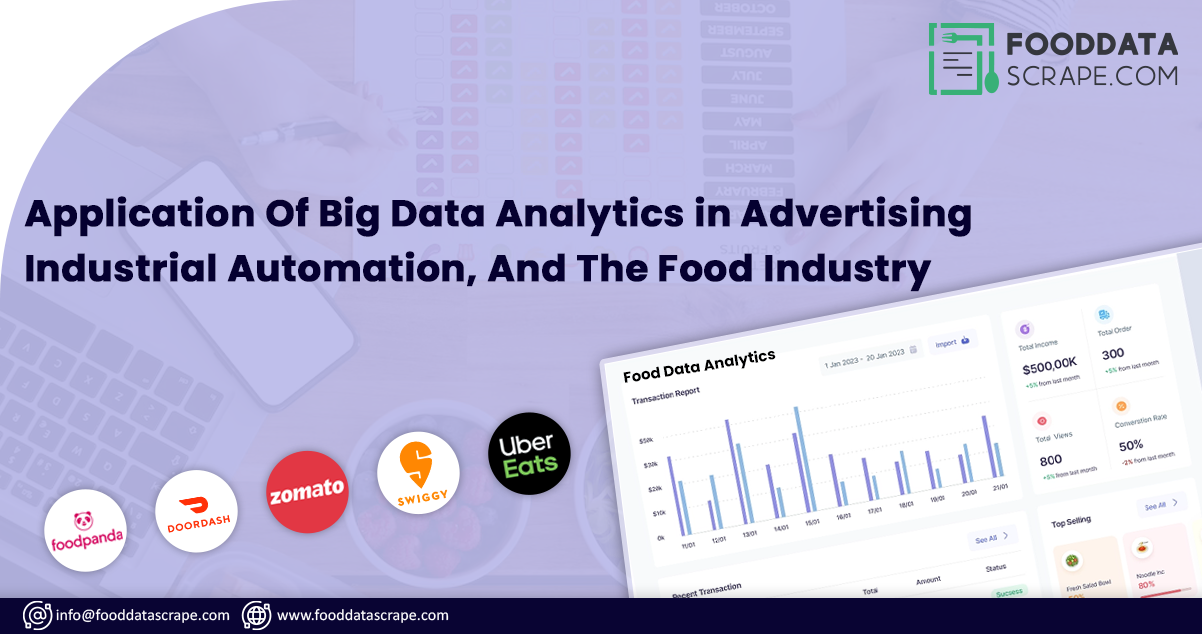Whether used for healthcare, government, finance, or any other industry, big data analytics is the primary factor for the highly significant advancements in the world today. It collects, examines, and analyzes large amounts of data to discover market trends, insights, and patterns to help companies make better decisions. This blog will emphasize the big data analytics applications in advertising, industrial automation, and the food industry.
DaaS and Big Data in Advertising

Traditional advertising was about communicating in the old traditional method to target your audience. But, with the advent of the internet, this changed. But, even though the Click-Through Rates remained. Nowadays, brands have easy access to a lot of data in the form of followers, likes, clicks, tweets, reviews, etc. All these data have unlimited advantages. When this unstructured data couples with the macro-level data, it provides significant communication opportunities. Capturing and analyzing massive amounts of structured and unstructured data enables digital advertisers to spot emerging patterns and trends, discover new relationships, and gain actionable insights to help lead the competitive market. It clearly shows how big data significantly impacts the digital advertising industry. Let's understand more in detail:
- Finding Complete Data: Successful digital advertising relies on collecting, integrating, and analyzing data from all sources. The challenges lie that almost all the data are in an unstructured format. These include data from videos, photos, and social media posts. All these data can't be analyzed using traditional methods. Hence, companies can easily collect, store, and analyze the type of data they want using big data analytics platforms in structured and unstructured formats.
- Real-Time Data Analysis: Companies can get real-time insights using a big data analytics platform, which can help make real-time decisions and take immediate actions based on reliable, fresh, and relevant information.
- Personalized and Targeted Ads: Using big data, digital advertisers can easily target users with more personalized ads mostly want to see. However, digital advertising comprises nearly 25% of today's total advertising spend. But you can see the full impact of big data when all advertisements are data-driven.
Big Data in Industrial Automation
Industrial data is the accumulation of sensor data at regular intervals and stored. Products, including Enterprise Manufacturing Intelligence, use big data to check relationships between two or more parties. The application of big data is for predictive maintenance and energy-efficient production. Another advantage of big data is identifying any hidden variables in production steps they know exist. After discovering the problem source, manufacturers can easily use data analytics to track the reason for the variables. They can help manufacturers enhance output while cutting down costs and eliminating waste. Big data analytics can also minimize breakdown and unscheduled downtime by nearly 25%. The importance of big data in industrial automation is in real-time performance, price optimization, supply chain optimization, product development, fault prediction, and advanced factory design.
- Big Data Analytics via Self-Service Systems: By incorporating self-service analytics, companies can collect a massive amount of big data from the production plants. It breaks down the real-time data, detects faults, finds patterns, and creates a visualization for decision-makers.
- Big Data Analytics & Predictive Maintenance: Engineers use big data analytics to make informed decisions. They can quickly prioritize changes and actions to avoid unscheduled downtime or equipment manipulation.
- Automate Production Management: It efficiently automates production management by reducing the number of human efforts and actions required for the manufacturing facility. It analyzes the historical data of a production process, couples it with real-time information, and automates the physical changes to equipment by using advanced robotics and actuators to control software.
DaaS in the Food Industry

The use of big data analytics in the food processing and food service industry is also an example. A couple of ways in which significant data works are as follows:
- Marketing & Advertising: To understand how they perform, restaurants rely on the written feedback collected from their customers after a meal. But now, they can crawl restaurant reviews or monitor their brands on several social media websites. They can also crawl restaurant menu data. Restaurants can also get access to important past ordering data that they can use for making recommendations in personalizing menus.
- Operations & Supply Chain: Businesses can easily access micro-level information using big data analytics. Using big data technologies, supply chain optimization can help in higher preservation levels, fresh foods for consumers every time, and less spoilage due to supply chain insufficiencies.
- Test New Products: Using big data analytics, fast food chains can evaluate new products' financial impact and popularity before implementing them. They can leverage public data to understand the customers' choices and preferences. Chains can also conduct surveys to give customers direct feedback on a new product.
- Improve Operations: As more and more fast food restaurants are into the food delivery option, they can use big data analytics to enhance the speed and quality of the service. They can also track the insights from the data aggregated from the delivery orders and offer a better picture of the customer's location and the amount they are willing to pay to deliver it. Analytics and big data can also enhance in-store operations.
- Cater More Effectively to Customers: Data analysis of consumers' food preferences can help several fast food chains to optimize their menus and enhance sales. Food and beverage analysis for fast food menus help the chains to understand what's most popular or desirable menu items. It allows them to understand what changes they can make to their menus to increase their customer base.
Key Takeaways of Big Data Analytics in the Food Industry
- Analysis of new data sources and performing better decisions to realize an increase in ROI by 34%.
- Track customer needs and create new products to satisfy customer requirements.
- Get timely insights into industries and unveil new growth opportunities.
Conclusion:
This indicates how Big Data has influenced almost every sector. Big Data analytics has benefitted advertising, industrial automation, and the food industries.
For more information, get in touch with Food Data Scrape now! You can also reach us for all your food data scraping and mobile app data scraping service requirements.






























































































